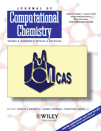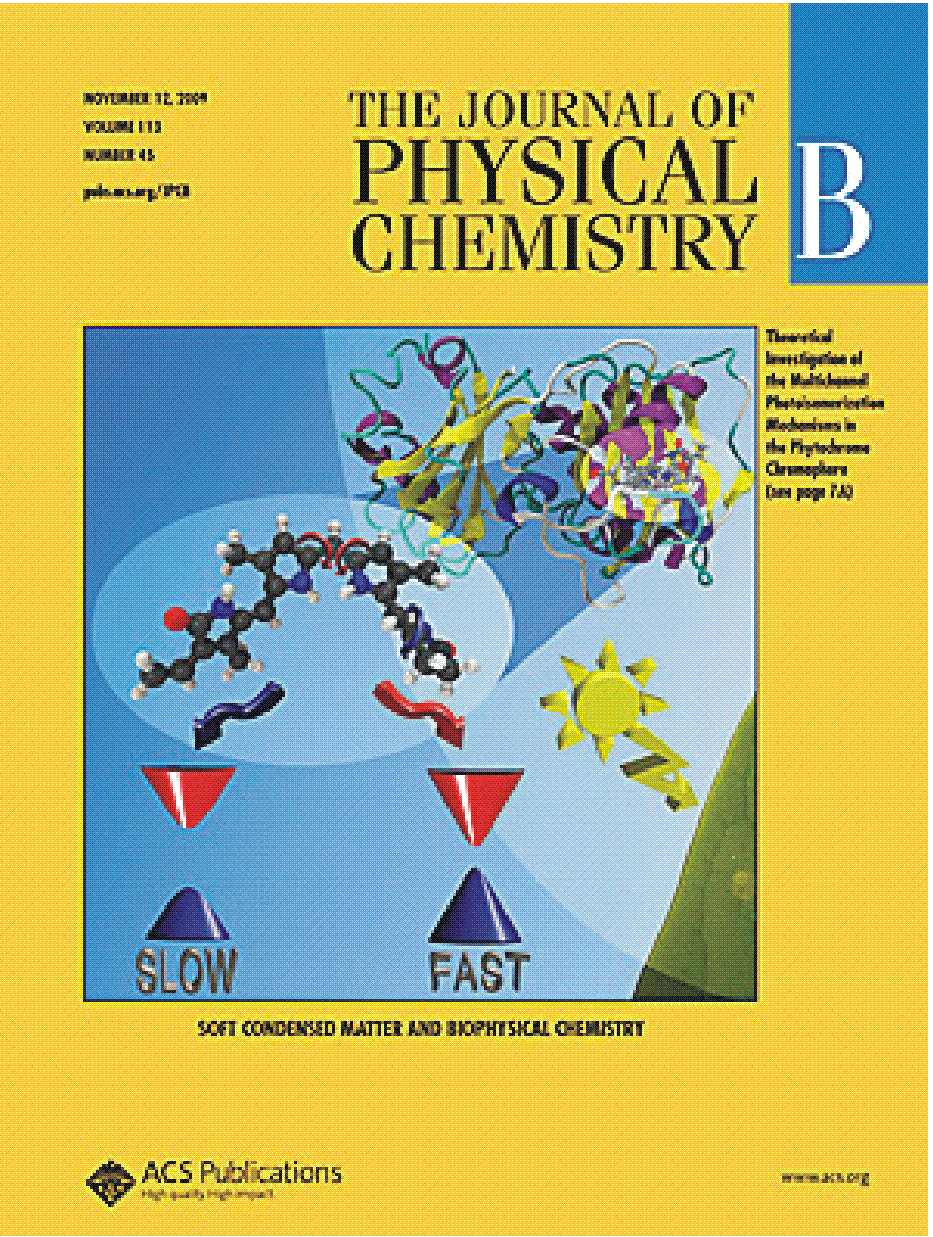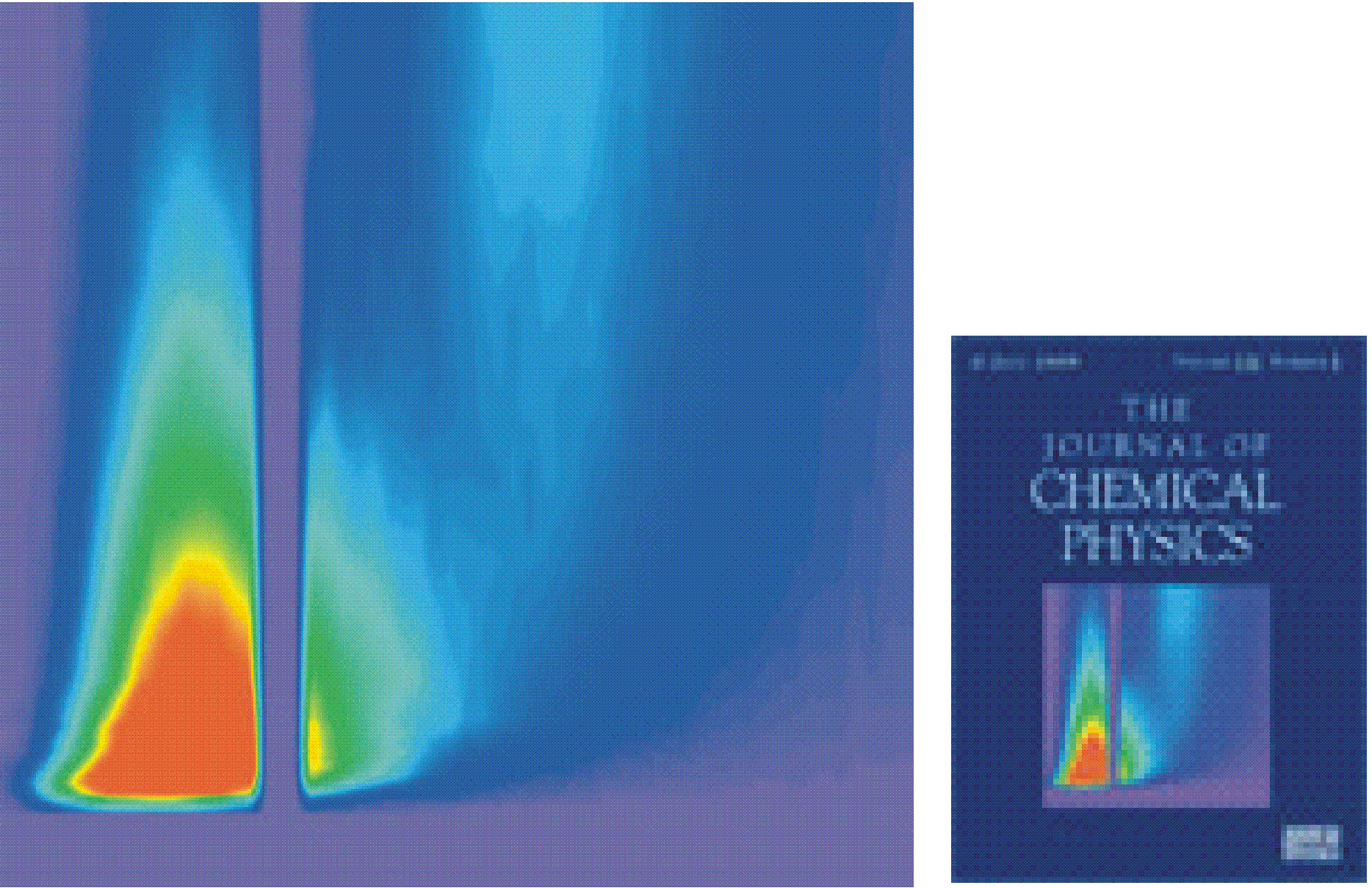QCEXVAL Journal Covers
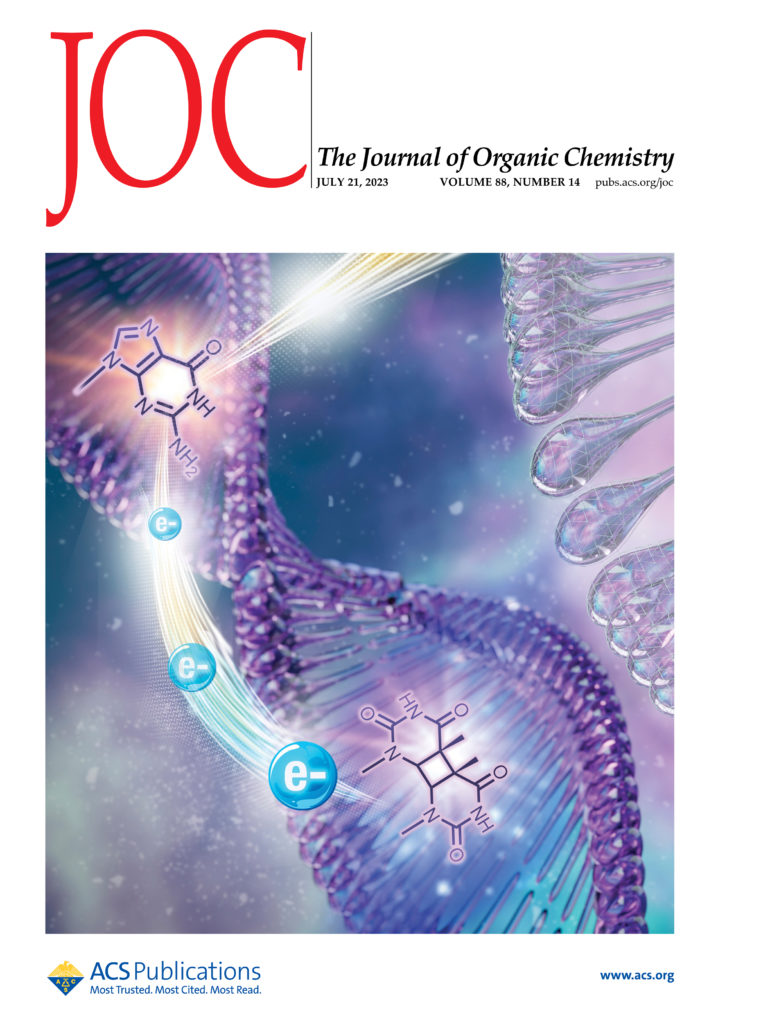
“Reductive Photocycloreversion of Cyclobutane Dimers Triggered by Guanines“
Gemma M. Rodríguez-Muñiz, Ana B. Fraga-Timiraos, Miriam Navarrete-Miguel, Ana Borrego-Sánchez, Daniel Roca-Sanjuán, Miguel A. Miranda and Virginie Lhiaubet-Vallet
Journal of Organic Chemistry, 88, 10111 – 10121 (2023)
The quest for simple systems achieving the photoreductive splitting of four-membered ring compounds is a matter of interest not only in organic chemistry but also in biochemistry to mimic the activity of DNA photorepair enzymes. In this context, 8-oxoguanine, the main oxidatively generated lesion of guanine, has been shown to act as an intrinsic photoreductant by transferring an electron to bipyrimidine lesions and provoking their cycloreversion. But, in spite of appropriate photoredox properties, the capacity of guanine to repair cyclobutane pyrimidine dimer is not clearly established. Here, dyads containing the cyclobutane thymine dimer and guanine or 8-oxoguanine are synthesized, and their photoreactivities are compared. In both cases, the splitting of the ring takes place, leading to the formation of thymine, with a quantum yield 3.5 times lower than that for the guanine derivative. This result is in agreement with the more favored thermodynamics determined for the oxidized lesion. In addition, quantum chemistry calculations and molecular dynamics simulations are carried out to rationalize the crucial aspects of the overall cyclobutane thymine dimer photoreductive repair triggered by the nucleobase and its main lesion.
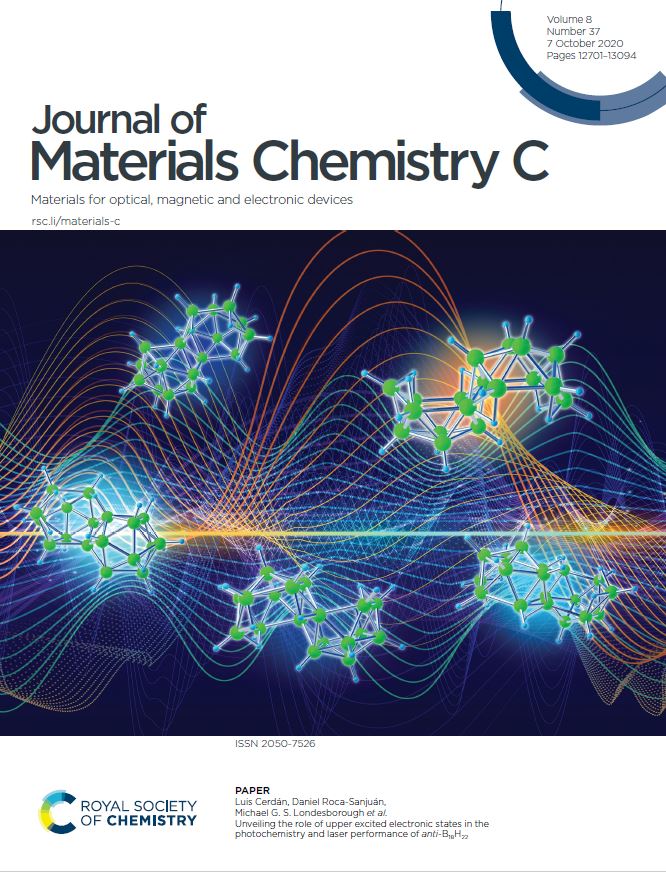
Luis Cerdán, Antonio Francés-Monerris, Daniel Roca-Sanjuán, Jonathan Bould, Jiří Dolanský, Marcel Fuciman and Michael G. S. Londesborough
Journal of Materials Chemistry C, 8, 12806 – 12818 (2020)
In the search for innovative new light sources, the discovery that solutions of the boron hydride anti-B18H22 generate photostable blue laser emission stands out in its significance as the first laser borane. Surprisingly, though, the laser performance of anti-B18H22 (∼10% efficiency) does not match the expectations based on its exceptional photophysical properties (Φf = 0.97 and high photostability). To understand this contradiction, we herein present an investigation into the upper excited states of the anti-B18H22 photophysical system, which we suggest to be the most relevant factor to its laser performance. The use of computational quantum chemistry, laser and UV-vis spectroscopy, NMR spectroscopy, and mass spectrometry unveil the role of the upper excited states on the laser performance of anti-B18H22, showing that efficient excited state absorption (ESA) leads to the population of these states, and results not only in the loss of laser efficiency, but also in the activation of chemically reactive relaxation pathways and the formation of photochemically produced novel molecular species. The likely composition of these photoproducts, formed upon prolonged high intensity laser irradiation, is inferred from their molecular masses, NMR properties, and calculated natural orbitals. Together, these results are of key importance to the complete understanding of the anti-B18H22 photophysical system and provide valuable information to chemists and laser physicists working to mitigate deficiencies and enhance the performance of the next generation of borane lasers and borane-based photoactive materials.
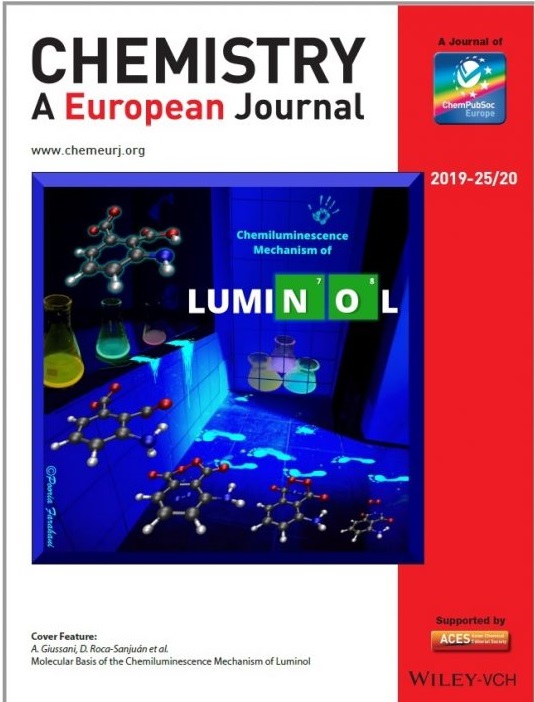
Angelo Giussani, Pooria Farahani, Daniel Martínez-Muñoz, Marcus Lundberg, Roland Lich and Daniel Roca-Sanjuán
Chemistry: A European Journal, 25, 5202 (2019)
Quantum‐chemistry determinations of the luminol chemiluminescence mechanism have made it possible to: first, clarify the spin inversion of the reaction; secondly, to determine the concerted nature of the two steps of 3O2 addition and 1N2 elimination; thirdly, to answer why such oxygen by nitrogen substitution must occur for an efficient excited‐state population; fourthly, to describe the electronic‐structure properties of the chemiexcitation; and finally, to distinguish the paths producing light emission versus those giving rise to radiationless decay. More information can be found in the Full Paper by A. Giussani, D. Roca‐Sanjuán, et al. on page 5202.
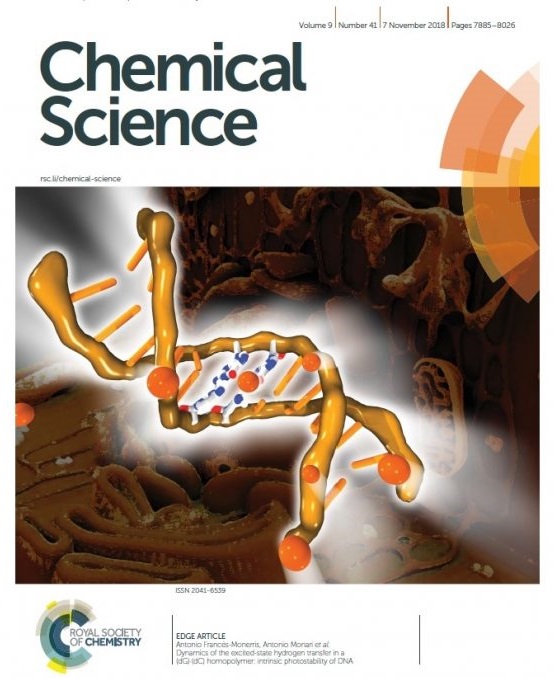
Inside front cover
Antonio Francés-Monarris, Hugo Gatusso, Daniel Roca-Sanjuán, Iñaki Tuñón, Marco Marazzi, Elise Dumont and Antonio Monari
Chemical Science, 9, 7902-7911 (2018)
The intrinsic photostability of nucleic acids is intimately related to evolution of life, while its understanding at the molecular and electronic levels remains a challenge for modern science. Among the different decay pathways proposed in the last two decades, the excited-state hydrogen transfer between guanine–cytosine base pairs has been identified as an efficient non-reactive channel to dissipate the excess of energy provided by light absorption. The present work studies the dynamics of such phenomena taking place in a (dG)$(dC) B-DNA homopolymer in water solution using state-of-the-art molecular modelling and simulation methods. A dynamic effect that boosts the photostability of the inter-strand hydrogen atom transfers, inherent to the Watson–Crick base pairing, is unveiled and ascribed to the energy released during the proton transfer step. Our results also reveal a novel mechanism of DNA decay named four proton transfer (FPT), in which two protons of two adjacent G–C base pairs are transferred
to form a biradical zwitterionic intermediate. Decay of the latter intermediate to the ground state triggers the transfer of the protons back to the guanine molecules recovering the Watson–Crick structure of the tetramer. This FPT process is activated by the close interaction of a nearby Na+ counterion with the oxygen atoms of the guanine nucleobases and hence represents a photostable channel operative in natural nucleic acids.

“A two-scale approach to electron correlation in multiconfigurational perturbation theory”.
P. Farahani, D. Roca-Sanjuán, and F. Aquilante,
Journal of Computational Chemistry, 35, 1609-1617 (2014)
On page 1609 (DOI: 10.1002/jcc.23666), Pooria Farahani et al. present a new approach for calculating dynamic electron correlation effects in large molecular systems using multiconfigurational second order perturbation theory (CASPT2). The method is restricted to cases where partitioning of the molecular system into an active site and an environment is meaningful. Only dynamic correlation effects derived from orbitals extending over the active site are included at the CASPT2 level of theory, whereas the correlation effects of the environment are retrieved at lower computational costs.
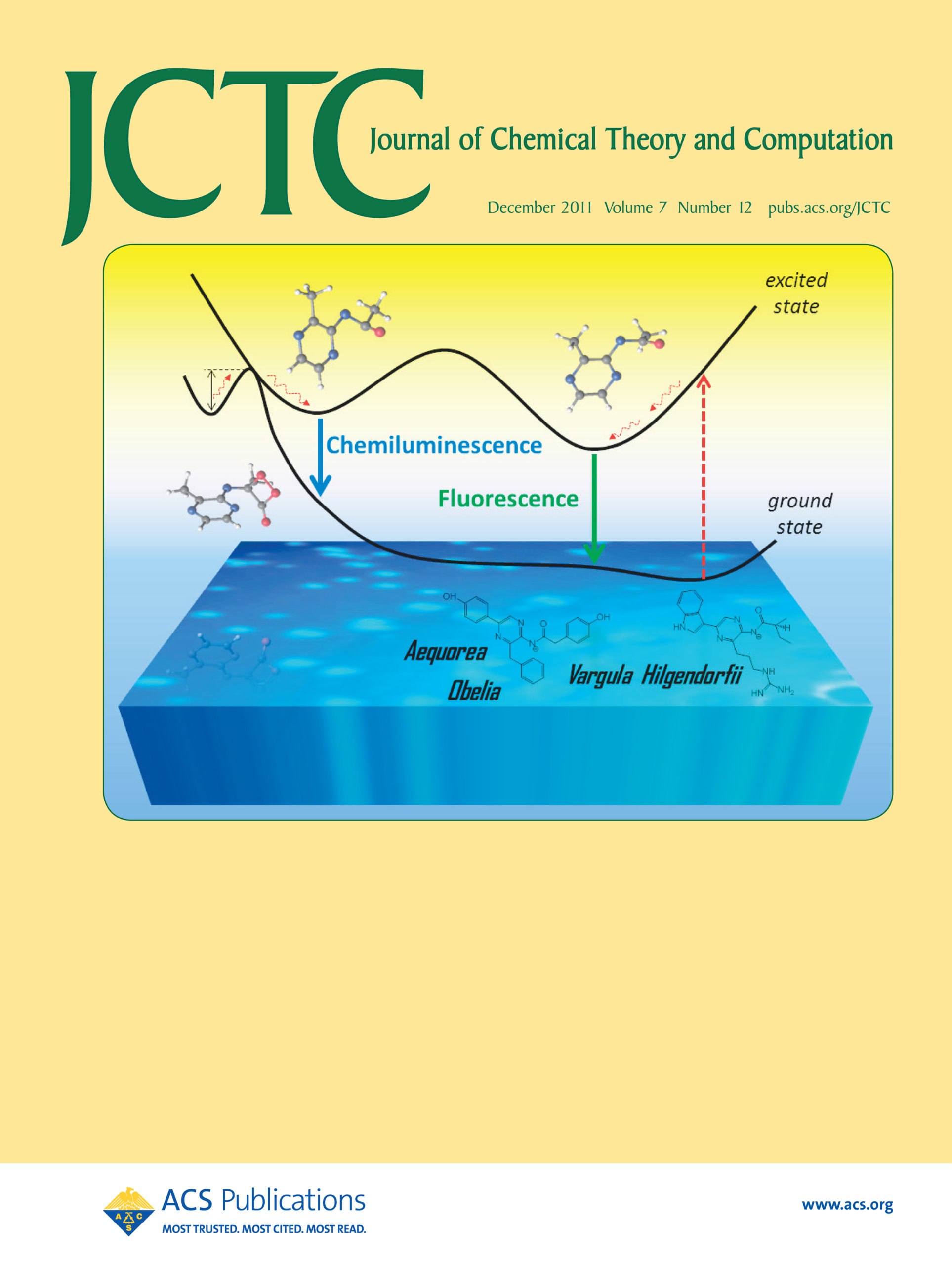
“Chemiluminescence and Fluorescence of a Small Model for Coelenteramide and Cypridina Oxyluciferin: A CASSCF/CASPT2 Study”.
D. Roca-Sanjuán, M. G. Delcey, I. Navizet, N. Ferré, Y.-J. Liu, and R. Lindh,
Journal of Chemical Theory and Computation, 7, 4060-4069 (2011)
Excited-state potential energy surfaces are often more complex than expected. The excited-state equilibrium minima responsible for the fluorescence and chemiluminescence phenomena in a small model for coelenteramide and Cypridina oxyluciferin have been found to be different. Such molecules are the light-emitting species in the Aequorea, Obelia, and Vargula hilgendorfii marine bioluminescent organisms. On the basis of the findings, some recommendations are given for future theoretical and experimental investigations on chemiluminescence and bioluminescence. See D. Roca-Sanjuán, M. G. Delcey, I. Navizet, N. Ferré, Y.-J. Liu, and R. Lindh, pp 4060—4069.
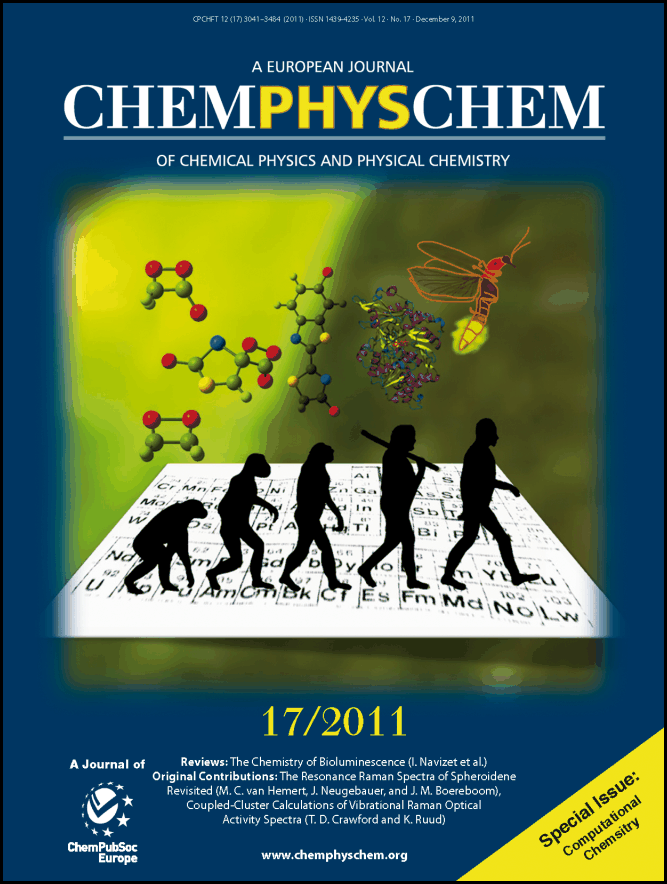
“The Chemistry of Bioluminescence: An Analysis of Chemical Functionalities”.
I. Navizet, Y.-J. Liu, N. Ferré, D. Roca-Sanjuán, and R. Lindh,
ChemPhysChem. A European Journal of Chemical Physics and Physical Chemistry, 12, 3064-3076 (2011)
The chemical functionalities of the bioluminescence phenomenon have been rationalized in the last decades via systematic studies from small to large-size molecular models, as reviewed by R. Lindh et al. on p. 3064. Electron-donating chemical groups conjugated to peroxo moieties are the molecular structures that intrinsically holds the optimal electronic properties for the process, whereas the surrounding enzymes mainly account for color-tuning.
